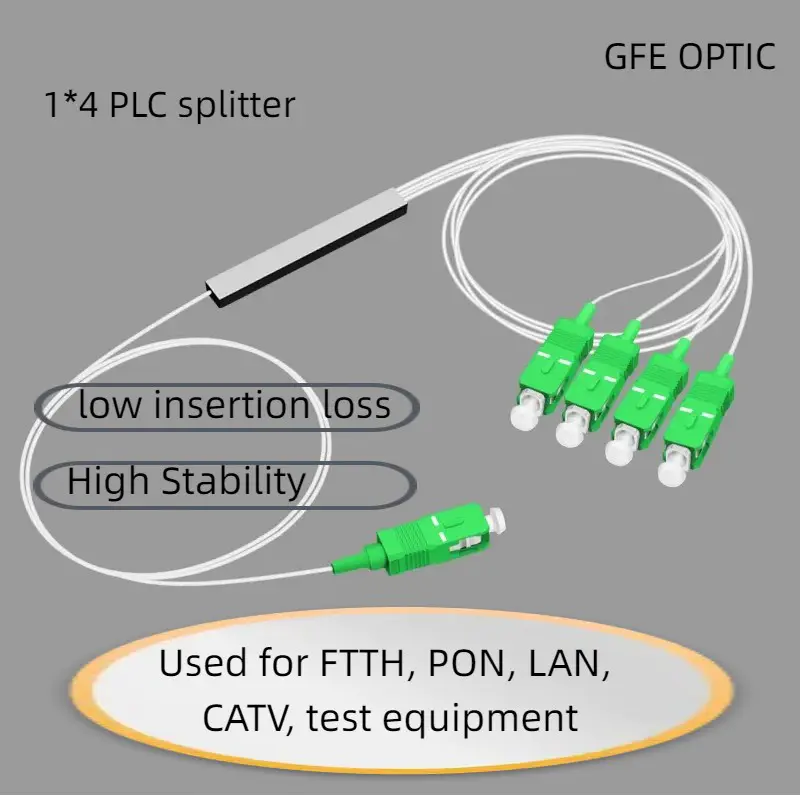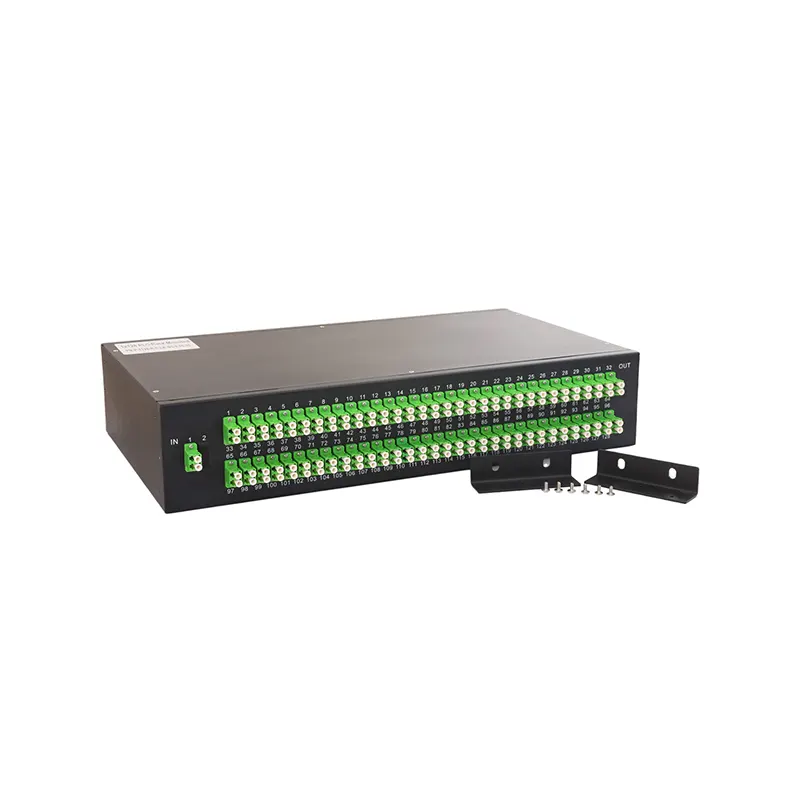Fiber optic splitters enable a signal on an optical fiber to be distributed among two or more fibers. Since splitters contain no electronics nor require power, they are an integral component and widely used in most fiber optic networks.
From a technology standpoint, there are two commonly used types of optical splitters:
- Fused Biconic Tapered (FBT)
- Planar Lightwave Circuit (PLC)
Among them, the planar waveguide optical splitter (PLC) is widely used in FTTx and PON. The fusion tapered beam splitter is formed by fusing two or more optical fibers on the side; the planar waveguide beam splitter (PLC) is a micro-optical component type product that uses photolithography technology to form an optical waveguide on a dielectric or semiconductor substrate. Realise the branch assignment function. The splitting principles of these two types of optical splitters are similar. They both achieve different branch amounts by changing the evanescent field coupling between the fibres (coupling degree, coupling length) and changing the fiber radius. As with most technology, each type has both advantages and disadvantages when deploying it in a passive optical network.

How do we choose among the many types of optical splitters above? We can first determine the application occasions and choose the appropriate optical splitter according to actual needs. For example, in applications where there are few branches and they are insensitive to light wavelengths (that is, only 1×2 or 1×4 is sufficient), select the fusion taper type optical splitter: If it is used in FTTH and other applications that require multiple wavelengths (that is, 1×4 or more), choose a planar waveguide (PLC) optical splitter, because the planar waveguide (PLC) optical splitter is uniform and the channel is uniform.


